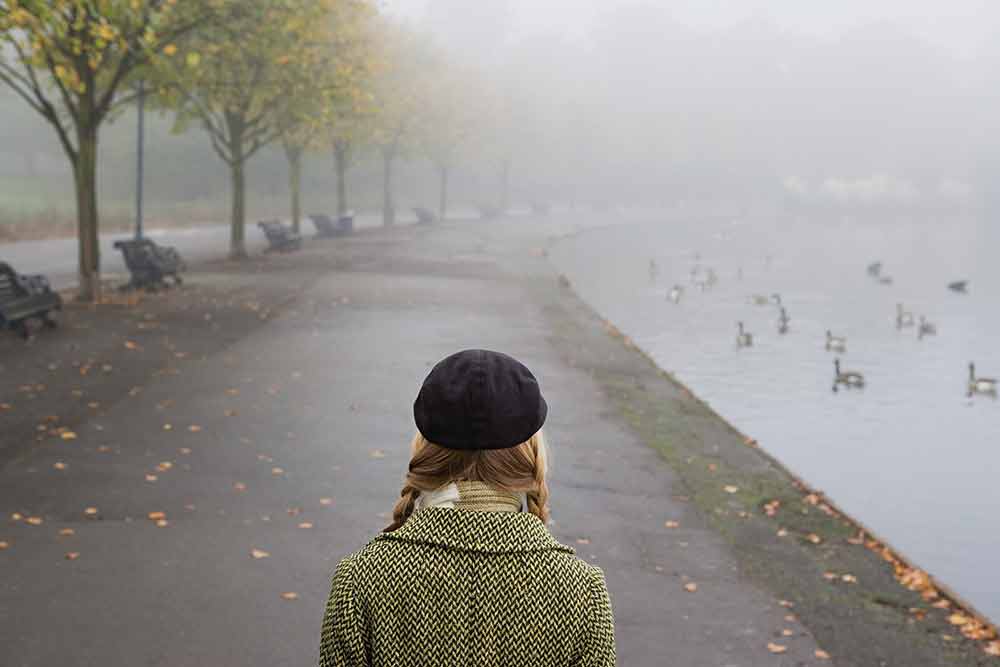Seasonal Affective Disorder (SAD) and Relapse

If you’re in addiction recovery, “feeling down” is a potential relapse trigger—and especially if you live at a northern latitude where shorter days get really short—it’s a good idea to consider whether you might be prone to SAD and what you’ll do if it (or even an “ordinary” case of winter blues) strikes.
UNDERSTANDING SEASONAL AFFECTIVE DISORDER
SAD, like addiction disorder, is a mental illness—not a sign of weakness nor anything to be ashamed of, and certainly not something you’re obligated to “tough out” on your own. It can nearly always be reduced by professional medical treatment. It has a tendency to sneak up on its victims, however—starting in the fall with fairly mild “blues” and becoming more intense as the days grow shorter—so if it’s September or October and you’re feeling more down than usual even without regular drug intake, it’s a good idea to get a medical evaluation even if things don’t seem too bad yet.
A “summer version” of SAD exists as well, but this post will focus on coping with the more common winter-onset type.
TURN ON THE LIGHTS
“Light therapy,” the standard first-line treatment for SAD, is associated with improvement in up to 80% of cases. It typically involves spending 30–90 minutes every morning in a room illuminated by white fluorescent lights, often in a group setting to increase the cheer-up effect through camaraderie. It’s also possible to buy individual “light therapy boxes” for home use.
It pays, though, to take advantage of all the real sun you can get. Unless you live in northern Alaska where the sun disappears completely for months, there will be at least a short period of natural light every day. During this period, stay as close as you can to a window with a view (preferably facing south)—even if it’s cloudy, some sunlight effect will get through. And go outdoors for a while at midday if you can.
STAY ACTIVE
Since “outdoors” can get cold this time of year, use that time for a good brisk walk and you’ll reap double benefits: warming up your body and generating depression-combatting hormones. Exercise is good at any time of year for anyone suffering from depression or in recovery from addiction, so if you aren’t already doing it regularly, you’ll get yet another benefit by developing the habit now.
WATCH YOUR DIET
Although SAD is likely to increase your cravings for “comfort foods,” try to resist the urge—in the not-so-long run, loading up on sugar and empty-calorie carbs will make that sluggish “down” feeling even worse. While it’s important to eat ample calories in colder weather, you’re much better off with foods that release their calories slowly and in combination with nutrients. Go for:
- Nuts
- Avocado
- Other fresh fruits and vegetables
- Fish
- Poultry
… and other foods rich in proteins, vitamins and healthy fats.
Consider taking a daily vitamin D supplement as well: it’ll make up for some of what you’re missing in sunlight.
TALK TO YOUR DOCTOR
Of course, if you suspect you have actual seasonal affective disorder and not simply winter blues, you should see a doctor for a professional diagnosis and further advice. Discuss your SAD struggles with your regular counselor and support group, too: talk therapy is a major part of most successful treatments.
Note: For more severe forms of SAD, antidepressants may be recommended. Fortunately, unlike many medications prescribed for pain or anxiety, antidepressants rarely carry the risk of true physical addiction. Some, however, are known to occasionally cause “withdrawal symptoms”—nausea, fatigue, resurgence of “down” feelings—if stopped abruptly. If you have an addiction disorder, you may also run the risk of reactivating the “pop a pill as a quick fix” thinking habit, which could mean increased chance of relapse. Make sure your doctor knows about your addiction and the contributing factors.
Finally, take courage! Most addiction disorders are exacerbated by the idea that “things will never get better”—depressive disorders, even more so. If there was ever a contributing circumstance that can be guaranteed to change on schedule, it’s the turn of seasons and the return of longer days.

